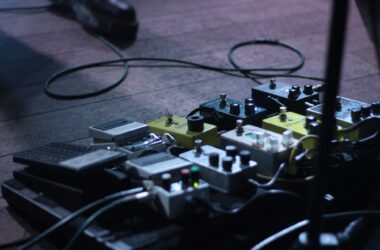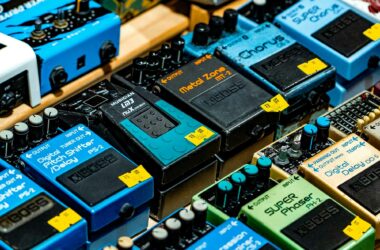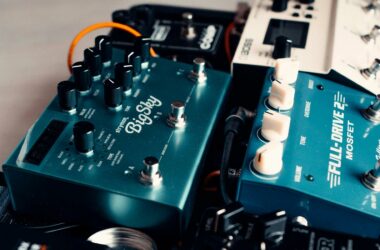The often overlooked role of buffers
In the world of guitar effects pedals, certain components sometimes go a little unnoticed, even though they are essential for preserving sound quality. Among them, the buffer occupies a special place. If you’ve ever heard of signal loss or altered tone in your effects chain, chances are a buffer can solve these problems.
But what exactly is a buffer? Why is it so important? And why do some pedals come with their own buffer? Let’s decipher everything you need to know about buffers and answer any questions you may have!
What is a buffer?
A buffer is an electronic circuit that acts as an intermediary between your guitar and the other elements of your signal chain. Its main purpose is to stabilize impedance. More precisely, it converts the high-impedance signal emitted by your pickups into a low-impedance signal.
This conversion is crucial because a high-impedance signal is particularly vulnerable to degradation caused by :
- Long cables: the longer the cable, the more it attenuates high frequencies.
- Many true bypass pedals: although excellent for not coloring / tinting the sound, they can build up resistance in the chain, which can affect the signal.
A buffer therefore acts as a “transparency amplifier”, preserving the integrity of the original signal.
How does a buffer pedal work?
A buffer pedal is specifically designed to solve the problem of signal loss. Strategically placed in your chain, it maintains a stable, dynamic signal, no matter how long the cables or how many pedals you use.
- Before the effects chain: A buffer placed just after the guitar helps preserve the richness of the high frequencies, which are often the first to disappear.
- After the effects chain: Some guitarists prefer a buffer at the end of the chain, to ensure that the signal remains “solid” all the way to the amplifier.
Some buffer references:
Modern buffer pedals are often compact and offer almost transparent performance.
TC Electronic BonaFide Buffer
This pedal is a benchmark in sonic transparency. With an impressive signal-to-noise ratio of +112 dB, the BonaFide Buffer guarantees complete signal preservation, even in the most complex setups. Compact and robust, it integrates perfectly into any configuration.
JHS Little Black Buffer
The Little Black Buffer is a minimalist but extremely effective solution. Placed at the beginning of the chain, it stabilizes impedance and eliminates tone loss over long distances. Its discreet design makes it easy to attach under a pedalboard.
Boss TU-3 Chromatic Tuner (with built-in buffer)
More than just a tuner, the TU-3 incorporates a high-quality buffer that stabilizes the signal in complex chains. Highly appreciated for its reliability and robustness, it offers the dual function of tuner and buffer, making it a practical and economical choice.
MXR M133 Micro Amp
Although primarily a boost, the Micro Amp also acts as an excellent buffer. It reinforces the signal while stabilizing frequencies lost through long chains or cables. Its ease of use makes it particularly versatile.
Empress Buffer+
The Empress Buffer+ is a high-end option with advanced features. In addition to its role as a buffer, it includes a tuning circuit, an output with inverted phase, and a loop for inserting other effects. Perfect for demanding musicians looking for a complete solution.
Why do some pedals have their own buffer?
Some pedals, particularly high-end overdrives, delays or reverbs, incorporate a buffer in their circuitry. This makes it possible to :
- Improve compatibility with other pedals or amplifiers.
- Minimize signal loss in complex configurations.
- Optimize their own operation, especially for effects requiring a precise, strong signal.
A good example is the Bosswhich use a built-in buffer to guarantee sonic stability. Pedals like the DS-1 or the DD-7 offer consistent performance, whatever the configuration.
Buffer or true bypass: which to choose?
The choice between buffer and true bypass is often a source of debate. True bypass is popular for its ability to cut the circuit completely when a pedal is deactivated, thus preserving a pure signal. However, in long or complex chains, too many true bypass pedals can cause a loss of signal.
The ideal compromise is to use a balanced mix of true bypass pedals and pedals with built-in buffers. For example, a buffer at the beginning and end of a chain may be enough to guarantee a clean sound throughout your pedalboard.
The key benefits of a buffer in your setup
- High-frequency preservation: No more “muffled” sound caused by long cables.
- Signal level maintenance: Ideal for preventing loss of volume or dynamics.
- Greater compatibility: buffers help stabilize interactions between different pedals.
Is a buffer required for all configurations?
Not necessarily. If you play with a simple chain (a guitar, a few pedals and an amplifier), a buffer may be superfluous. On the other hand, as soon as your setup becomes more complex, with cables of over 5-6 meters or a multitude of pedals, the addition of a buffer becomes almost unavoidable.
Conclusion: a small element for a big impact
The buffer is a discreet but powerful ally in the world of effects pedals. By stabilizing your signal, it ensures that your sound remains clear, rich and true to your intentions, no matter how complex your setup. Whether integrated into a pedal or as an independent box, it plays an essential role in optimizing your signal chain.
So, ready to give your sound a buffer boost? Share your experience or questions in the comments section!


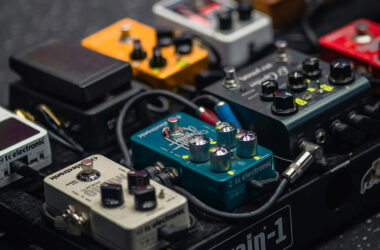


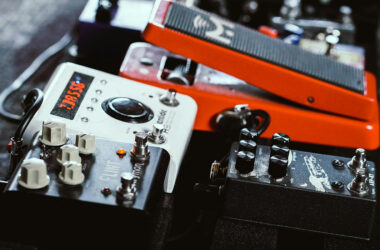
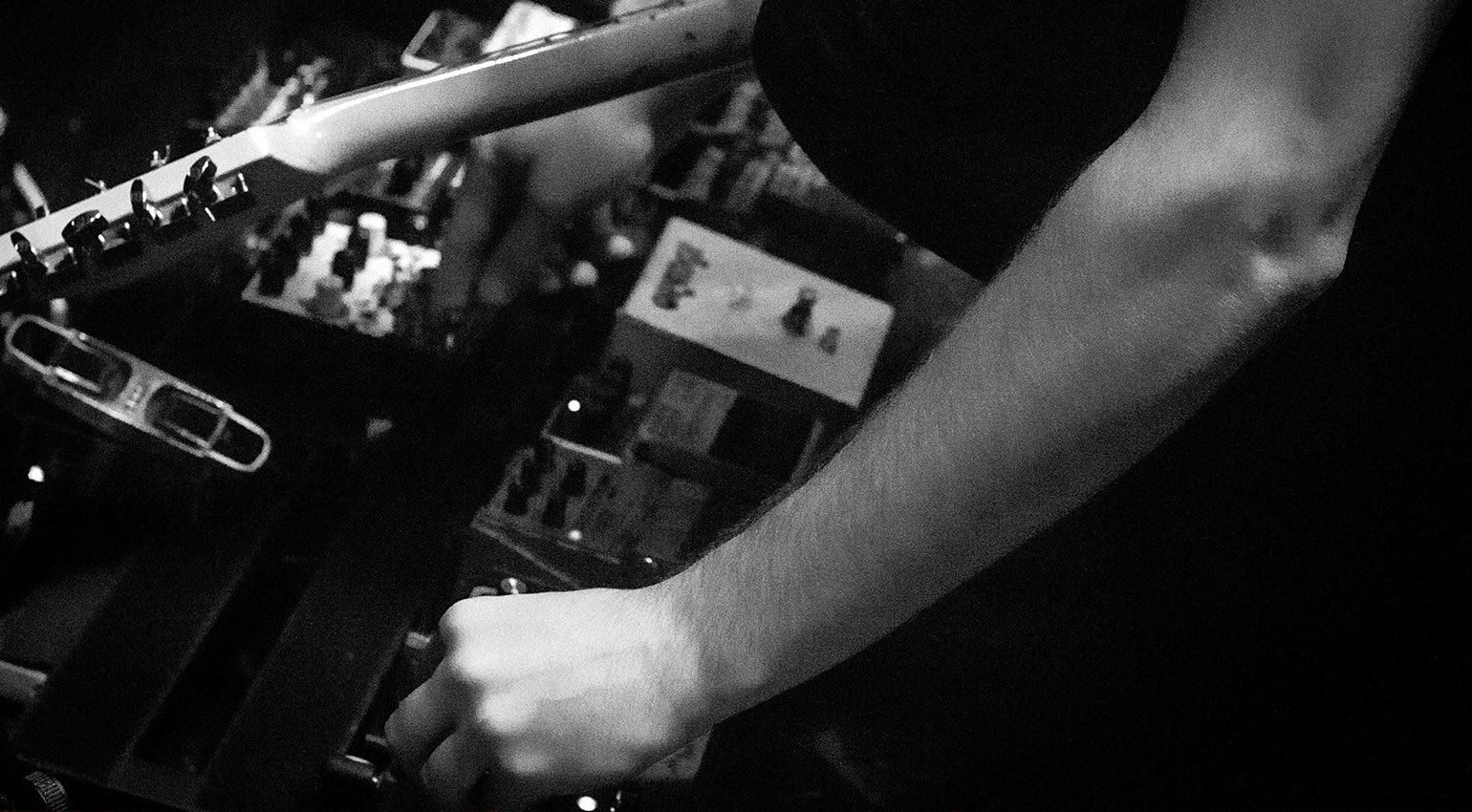

 tc electronic BonaFide Buffer
tc electronic BonaFide Buffer
 JHS Pedals Little Black Buffer
JHS Pedals Little Black Buffer
 Boss TU-3W Waza Floor Tuner
Boss TU-3W Waza Floor Tuner
 MXR Micro Amp M133
MXR Micro Amp M133
 Empress Effects Buffer+
Empress Effects Buffer+